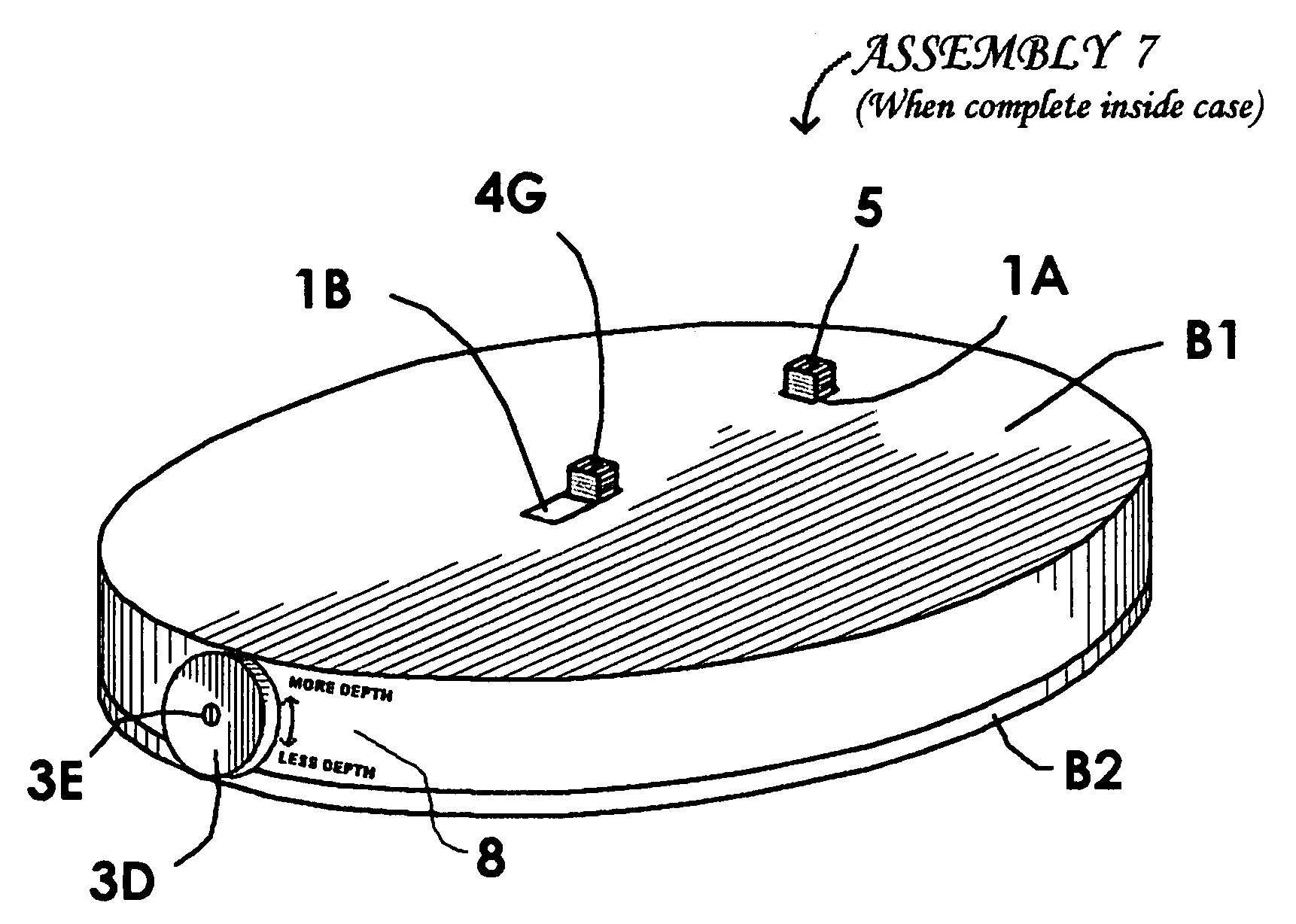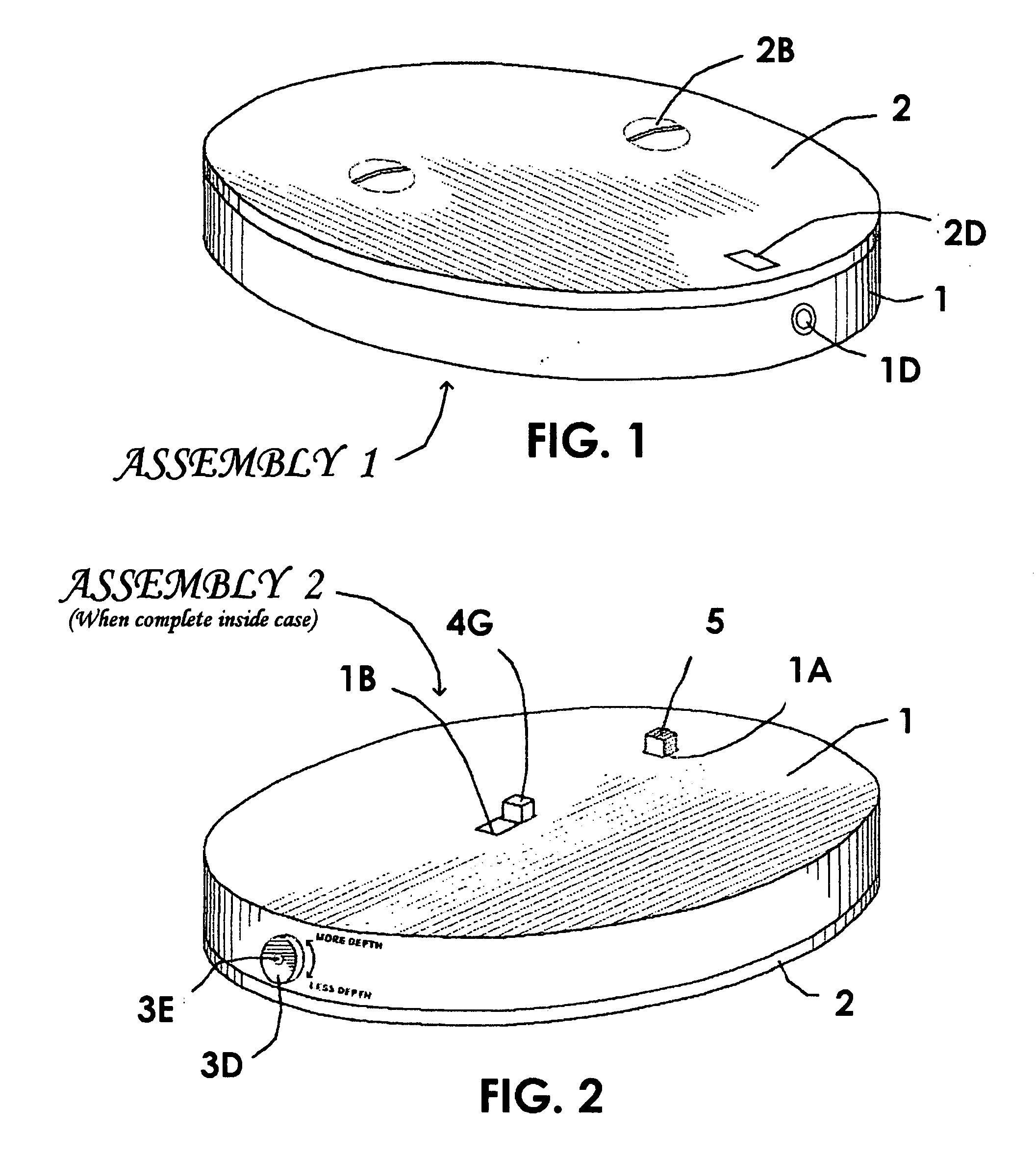There are several problems connected with such systems.
The
primary problem is that during the course of preparing the skin for
puncturing, readying a blood analyzer device, and loading a new needle-bearing part, it is quite easy to remember whether or not a new,
antiseptic, unused, needle-bearing part has been inserted in the lancet device.
This can be hazardous to the person whose skin is being punctured, for the needle point of a used needle can have been, during the course of making a prior puncture, or during an intervening time period, contaminated with microscopic antigens or
bacteria, possibly leading to dangerous infections.
That
hazard could be much greater, and more significant if the lancet device being used is used not only on one person, but on a group of persons, as, for example, in a
nursing home where an inordinately-high percentage of the occupants are going to be diabetics.
Also, the point of an unprotected needle, during the time it resides in its lancet device between usings, may have been damaged to the extent a hook has actually been formed on the delicate, sharpened point, thereby causing an imperfect puncture, and, quite possibly, a dragging out of live tissue from the puncture site, an injurious action.
Additionally, loose needle-bearing parts, as marketed by
drug stores, although new and unused, may because of their boxed, unwrapped, continually exposed nature, be subject continually to the foregoing hazards.
Further, such needle bearing parts subject the user and / or the assistant to the chance of an accidental puncture before, during, and after the actual intended puncture.
It is true that
contamination or blunting of the needle points can have occurred before the needle wheels are sterilely packaged for distribution, but federal authorities may have programs overseeing such
manufacturing operations, and it is hoped that in no case would a manufacturer of such products allow such problems to exist in their operations.
However, for a person needing a lancet device several time daily, the inconvenience of keeping a boxful of these on hand, the extra cost, and the disposal factor weigh heavily in favor of having one lancet device for each patient, provided it embodies a large supply of needles.
First, the device holds only six needles, so, based on four punctures being performed daily, the
cartridge is good for only 1½ days.
Secondly, there is no fail-
safe system to prevent the needles in the
cartridge from being used over and over.
This could lead to finger infections.
Again, the
threat of diseases such as
hepatitis, AIDS, and HIV infections makes such a prospect quite fearful.
Using this device will likely get blood flowing, but is overly productive for normal use, and it will create several holes in the target skin.
It is possible for that device to be used time after time, with the attendant possibility of infections being transmitted.
Each cutter can be used time after time to draw blood, but the patient would suffer from overly extensive lacerations, and the chance of infections in the patient from repetitive uses would be objectionable.
Each cutter can be used time after time to draw blood, but the patient would suffer from overly extensive lacerations, and the chance of infections in the patient would be objectionable.
Other shortcomings are these: The puncture the device makes is within an indentation in the rim of that device, and this is not conducive to its use on flat skin areas such as are preferred by some patients needing the use of a lancet device; There is no means of adjusting the depth its needles penetrate, and such adjustments are needed for different types of skin; The patent suggests that the needle-carrying parts are to be inserted in the wheel by hand, and this presents the possibility of finger sticks and
contamination of the needles; The patent suggests that a used needle can remain with its point hazardously exposed after the lancet has been used, and this can be dangerous; The needles in said device must employ an entirely separate device to
pull off protective covers on the tips of the needles in the lancet device, and this can lead to problems such as a lost pulling device, blunting of the fragile needle point during the process, and infection of the needle through the presence of contaminated material in the separate, pulling device; The patented device has protruding parts making it unwieldy in both the hand and in storage; The patented device will not delineate the puncture point when it is used, so the exact point of puncture, if it needs to be squeezed to start the blood flowing, cannot be easily determined, and this may mean additional punctures must be made; The patented device is overly complicated for use by patients having borderline mental or physical abilities, and is thereby not conducive to being used by a broad array of people; The needle-bearing parts of the patented device are not made so that, once used, they cannot be reused; and The patented device does not make use of a secondary needle-centering device, so its needle's precise location may be questionable and erratic.
 Login to View More
Login to View More  Login to View More
Login to View More 


